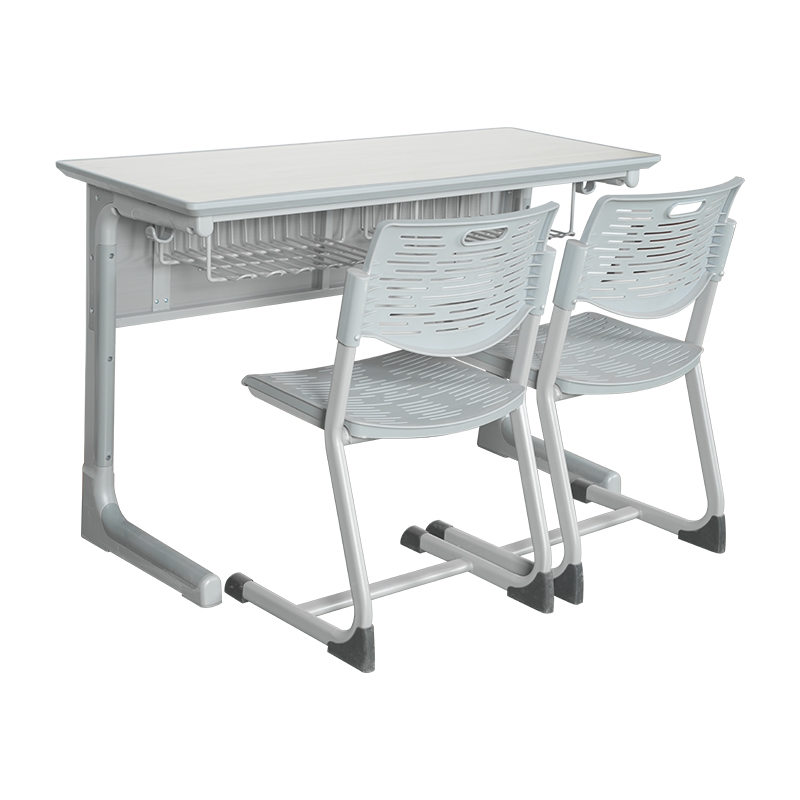In today's educational settings, the classroom desk chair combo has become a practical and space-saving solution for many schools. This integrated design merges the desk and chair into a single unit, simplifying classroom layouts and offering uniformity in student seating arrangements. The classroom desk chair combo is particularly popular in classrooms where space is limited or where frequent rearrangement of furniture is not required.

The primary advantage of the classroom desk chair combo lies in its stability and functionality. Since the chair is physically attached to the desk, there is minimal movement, which can help reduce distractions during class. It also ensures a consistent ergonomic distance between the student and the desktop, which supports proper posture and comfort during long periods of learning. This consistency contributes positively to focus and student productivity.
Furthermore, the classroom desk chair combo is typically designed with durable materials such as steel frames and laminated surfaces, ensuring long-term use with minimal maintenance. Many designs also accommodate easy cleaning, which is an important feature in shared educational environments. Many models include under-desk storage racks for books or school bags, further enhancing convenience and organization.
The classroom desk chair combo is an efficient, student-friendly furniture solution that promotes order, saves space, and supports a streamlined classroom environment, making it an ideal option for schools prioritizing practicality and ease of use.
When selecting a desk and chair for classroom use, functionality, durability, and comfort are key factors that educators and administrators take into account. Unlike the combined models, separate desk and chair for classroom sets allow more flexibility in classroom arrangement and cater to diverse learning needs.
One significant benefit of separate units is adjustability. A high-quality desk and chair for classroom can often be adjusted in height to suit students of various ages and body types, encouraging proper sitting posture and supporting long-term physical health. This is especially valuable in inclusive classrooms where children may vary widely in size and developmental stage.
Mobility is another feature schools often consider. With a separate desk and chair for classroom, teachers can easily reorganize furniture for group activities, exams, or lectures. This adaptability fosters dynamic learning environments and supports different teaching styles. Chairs may include a backrest for lumbar support, while desks might have ample surface space to accommodate textbooks, notebooks, and digital devices.
Material selection is important, too. Desks are often made from MDF or plywood with scratch-resistant finishes, while chairs may have molded plastic seats with reinforced frames. Schools often choose materials that are easy to clean and resist daily wear and tear.
Ultimately, a well-designed desk and chair for classroom enhances the physical comfort of students, supports engagement, and enables flexible use of classroom space, contributing significantly to a positive learning atmosphere.
While much attention is given to student seating, teacher classroom furniture plays an equally important role in shaping the educational environment. A teacher's workspace should be functional, comfortable, and supportive of a wide range of daily responsibilities—from lecturing and grading to meeting with students and preparing instructional materials.
A standard component of teacher classroom furniture is the teachers desk. It typically includes spacious drawers, compartments, or shelving for organizing documents, stationery, and teaching tools. Desks are usually larger than student models and designed for multitasking, offering ample surface area for laptops, lesson plans, and teaching aids.
Equally important is the teachers chair. An ergonomic chair with lumbar support and adjustable features helps maintain comfort during long periods of sitting. Since teachers often alternate between sitting and standing, mobility features such as swivel bases and wheels can enhance ease of movement within the classroom.
In addition to desk and seating, teacher classroom furniture may include storage units such as filing cabinets, lockable drawers, or bookshelves. These help keep teaching resources accessible and organized. Some classrooms are also equipped with podiums or mobile carts, allowing teachers to present materials or move between groups of students efficiently.


 English
English русский
русский Español
Español عربى
عربى
